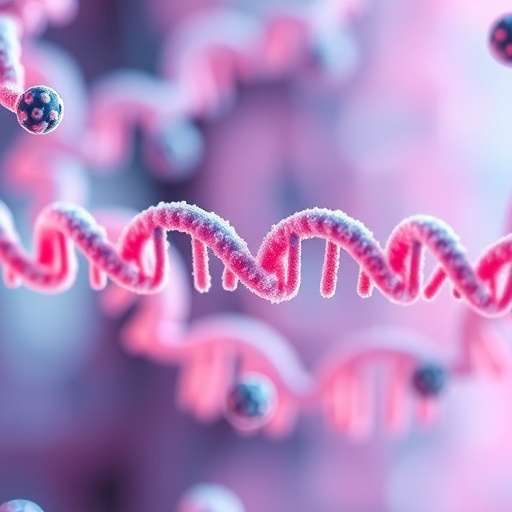Bottom Line: The presence of circulating tumor DNA (ctDNA) isolated from blood samples of patients with pancreatic adenocarcinoma was associated with poor outcomes.
Journal in Which the Study was Published: Clinical Cancer Research, a journal of the American Association for Cancer Research.
Author: Jean-Baptiste Bachet, MD, PhD, from the Gastroenterology and Digestive Oncology Department at Sorbonne University, and the Centre Universitaire des Saints-Pères, both in Paris, France.
Background: The incidence of pancreatic adenocarcinoma is on the rise in Western countries, and prognosis remains very poor. Pancreatic cancer is projected to become the second leading cause of cancer-related death in the United States by 2030, behind lung cancer, and is therefore considered a public health problem, Bachet noted.
There are several challenges to conducting translational research on pancreatic cancer, including the difficulty in obtaining tumor samples from patients, because of which, most studies have been limited to patients with resectable disease until now, Bachet explained. However, only 10 to15 percent of patients with pancreatic adenocarcinoma have resectable disease at diagnosis. Identification of robust prognostic or predictive biomarkers are urgently needed for all patients with pancreatic adenocarcinoma, whatever the stage of the disease, he said.
How the Study Was Conducted: Bachet and team initiated a prospective study five years ago to collect blood samples from patients with pancreatic adenocarcinoma with the goal of identifying blood-based biomarkers to overcome the challenge of limited availability of tumor samples for research purposes.
In this study, the researchers analyzed blood samples from 135 patients with pancreatic adenocarcinoma; 31 had resectable tumors, 36 had locally advanced disease (LA), and 68 had metastatic disease (M). They extracted DNA from the plasma samples and used a specific NGS analysis method to detect low-allele frequency mutations. They also screened all plasma samples for the three most frequent KRAS mutations in pancreatic adenocarcinoma, besides several other mutations, by picoliter droplet-based digital PCR (dPCR).
Results:
In multivariate analysis, the presence of ctDNA was an independent prognostic biomarker in patients with advanced disease, and it also correlated with the stage of the disease and the grade of tumor differentiation.
Of the 104 patients with advanced disease, 50 had detectable ctDNA (LA, 17 percent; M, 65 percent). After a median follow-up of 34.2 months, 76 died. Overall survival (OS) was 19 months in patients with no detectable ctDNA, versus 6.5 months in those with ctDNA.
When patients with advanced disease were grouped into tertiles based on the frequency of mutations in the ctDNA, there was a significant dose-response relationship with OS: 18.9 months for those in the lowest tertile, 7.8 months for those those in the middle, and 4.9 months for those in the highest tertile.
Of the 31 patients with resectable disease, six had detectable ctDNA. After a median follow-up of 33.3 months, 23 had disease recurrence and 13 of them died. Disease-free survival was 17.6 months in patients with no detectable ctDNA, versus 4.6 months in those with ctDNA; OS was 32.2 months versus 19.3 months.
A strong correlation was observed between the results obtained with NGS and droplet-based dPCR to study KRAS, confirming that their NGS strategy is pertinent, Bachet said.
Author Comment: "Our study confirms, in one of the largest reported series, the feasibility of detecting ctDNA in patients with pancreatic adenocarcinoma using a specific next-generation sequencing (NGS) analysis method that allows us to screen a large number of genes," said Bachet. "Our study also confirms the strong prognostic value of the presence of ctDNA and of its level, when detected, in advanced pancreatic adenocarcinoma," he added.
"Our results demonstrate the utility of circulating biomarkers in subclassifying cancers and managing treatment," Bachet noted. "We need to confirm these results in prospective clinical trials to better assess the predictive value of this biomarker in light of the dynamic biological changes that occur during treatment."
Limitations: As a limitation to the study, in the subgroup of patients who had curative-intent resection, blood samples were not collected before surgery so the researchers did not have pre-operative ctDNA data for these patients.
###
Funding & Disclosures: The study was funded by the Fondation d'Aide et Recherche en Cancérologie Digestive, the Ministère de l'Enseignement Supérieur et de la Recherche, the Université Paris-Descartes, the Centre National de la Recherche Scientifique (CNRS), the Institut National de la Santé et de la Recherche Médicale (INSERM), the Agence Nationale de la Recherche, the Institut Mérieux the SIRIC CARPEM, and a Fondation Servier fellowship. Bachet declares no conflicts of interest. Valerie Taly, a co-author of this study, received honoraria from Radiance Technologies and Boehringer Ingelheim. Bachet thanks all members of the team INSERM UMRS-1147, and in particular, Professor Laurent-Puig, the head of the team.
To interview Jean-Baptiste Bachet, contact Julia Gunther at [email protected] or 215-446-6896.
Follow us: Cancer Research Catalyst http://blog.aacr.org; Twitter @AACR; and Facebook http://www.facebook.com/aacr.org
About the American Association for Cancer Research
Founded in 1907, the American Association for Cancer Research (AACR) is the world's first and largest professional organization dedicated to advancing cancer research and its mission to prevent and cure cancer. AACR membership includes more than 37,000 laboratory, translational, and clinical researchers; population scientists; other health care professionals; and patient advocates residing in 108 countries. The AACR marshals the full spectrum of expertise of the cancer community to accelerate progress in the prevention, biology, diagnosis, and treatment of cancer by annually convening more than 30 conferences and educational workshops, the largest of which is the AACR Annual Meeting with nearly 19,500 attendees. In addition, the AACR publishes eight prestigious, peer-reviewed scientific journals and a magazine for cancer survivors, patients, and their caregivers. The AACR funds meritorious research directly as well as in cooperation with numerous cancer organizations. As the Scientific Partner of Stand Up To Cancer, the AACR provides expert peer review, grants administration, and scientific oversight of team science and individual investigator grants in cancer research that have the potential for near-term patient benefit. The AACR actively communicates with legislators and other policymakers about the value of cancer research and related biomedical science in saving lives from cancer. For more information about the AACR, visit http://www.AACR.org.
Media Contact
Lauren Riley
[email protected]
215-446-7155
@aacr
############
Story Source: Materials provided by Scienmag




